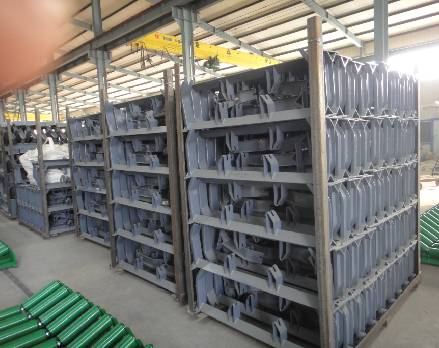 Afrikaans
Afrikaans  Albanian
Albanian  Amharic
Amharic  Arabic
Arabic  Armenian
Armenian  Azerbaijani
Azerbaijani  Basque
Basque  Belarusian
Belarusian  Bengali
Bengali  Bosnian
Bosnian  Bulgarian
Bulgarian  Catalan
Catalan  Cebuano
Cebuano  Corsican
Corsican  Croatian
Croatian  Czech
Czech  Danish
Danish  Dutch
Dutch  English
English  Esperanto
Esperanto  Estonian
Estonian  Finnish
Finnish  French
French  Frisian
Frisian  Galician
Galician  Georgian
Georgian  German
German  Greek
Greek  Gujarati
Gujarati  Haitian Creole
Haitian Creole  hausa
hausa  hawaiian
hawaiian  Hebrew
Hebrew  Hindi
Hindi  Miao
Miao  Hungarian
Hungarian  Icelandic
Icelandic  igbo
igbo  Indonesian
Indonesian  irish
irish  Italian
Italian  Japanese
Japanese  Javanese
Javanese  Kannada
Kannada  kazakh
kazakh  Khmer
Khmer  Rwandese
Rwandese  Korean
Korean  Kurdish
Kurdish  Kyrgyz
Kyrgyz  Lao
Lao  Latin
Latin  Latvian
Latvian  Lithuanian
Lithuanian  Luxembourgish
Luxembourgish  Macedonian
Macedonian  Malgashi
Malgashi  Malay
Malay  Malayalam
Malayalam  Maltese
Maltese  Maori
Maori  Marathi
Marathi  Mongolian
Mongolian  Myanmar
Myanmar  Nepali
Nepali  Norwegian
Norwegian  Norwegian
Norwegian  Occitan
Occitan  Pashto
Pashto  Persian
Persian  Polish
Polish  Portuguese
Portuguese  Punjabi
Punjabi  Romanian
Romanian  Russian
Russian  Samoan
Samoan  Scottish Gaelic
Scottish Gaelic  Serbian
Serbian  Sesotho
Sesotho  Shona
Shona  Sindhi
Sindhi  Sinhala
Sinhala  Slovak
Slovak  Slovenian
Slovenian  Somali
Somali  Spanish
Spanish  Sundanese
Sundanese  Swahili
Swahili  Swedish
Swedish  Tagalog
Tagalog  Tajik
Tajik  Tamil
Tamil  Tatar
Tatar  Telugu
Telugu  Thai
Thai  Turkish
Turkish  Turkmen
Turkmen  Ukrainian
Ukrainian  Urdu
Urdu  Uighur
Uighur  Uzbek
Uzbek  Vietnamese
Vietnamese  Welsh
Welsh  Bantu
Bantu  Yiddish
Yiddish  Yoruba
Yoruba  Zulu
Zulu Different Varieties of Conveyor Belt Rollers and Their Applications
Types of Conveyor Belt Rollers
Conveyor belts are essential components in many industries, serving the crucial function of transporting goods efficiently and safely. A significant part of any conveyor system is the conveyor belt rollers, which play a vital role in supporting the belt and facilitating its movement. This article explores the various types of conveyor belt rollers, their functions, and their applications in different industries.
1. Idler Rollers
Idler rollers are one of the most common types of conveyor rollers. They are used to support the conveyor belt and are typically found along the length of the conveyor system. Idler rollers are designed to reduce friction and wear on the belt, allowing for smoother operation and longer belt life. They come in various configurations, including flat, trough, and impact idlers.
- Flat Idlers These are the simplest form, consisting of a cylindrical roller that is mounted horizontally. They provide basic support and are often used in light-duty conveyors. - Trough Idlers These rollers are angled to create a trough shape, which helps contain the material being transported. This design is particularly useful in bulk material handling as it prevents spillage and ensures efficient loading. - Impact Idlers Located at loading points, impact idlers help absorb the shock of heavy loads hitting the conveyor belt. This minimizes damage to both the belt and the rollers, extending the system’s lifespan.
2. Drive Rollers
Drive rollers, also known as head rollers, are positioned at the discharge end of the conveyor system. They are responsible for driving the belt and are connected to a motor or mechanical power source. The performance of the drive roller is crucial for the overall efficiency of the conveyor system.
Drive rollers may have various surface textures, such as smooth, patterned, or rubber-coated, to enhance grip and provide better traction. In some cases, drive rollers are designed to be crowned, which helps to keep the belt aligned during operation.
Return rollers, as the name suggests, support the belt on its return journey back to the loading area. They are crucial for maintaining the proper positioning of the belt and reducing wear on its underside. Return rollers are generally flatter than idler rollers to provide stability and minimize resistance.
types of conveyor belt rollers

In some applications, return rollers may also include features like rubber coating to reduce noise and increase the lifespan of the belt and roller.
4. Self-Aligning Rollers
These specialized rollers are designed to help keep the conveyor belt aligned, even in the presence of misalignment or uneven loading. Self-aligning rollers automatically adjust to the position of the belt, reducing the risk of wear and potential damage.
This type of roller is essential in applications where the load may shift, or in environments where the conveyor is subjected to heavy lateral forces. They are particularly beneficial in mining, construction, and other rugged applications.
5. Specialty Rollers
In addition to the standard types of rollers mentioned above, there are several specialty rollers designed for specific applications. These may include
- Dust Control Rollers Equipped with sealing systems to minimize dust emissions in bulk material handling. - Washdown Rollers Made from corrosion-resistant materials, suitable for food processing or pharmaceutical industries where sanitation is critical. - Cooling Rollers Used in applications that require a cooling effect for products being transported.
Conclusion
Conveyor belt rollers are a fundamental aspect of conveyor systems, with various types designed to meet different operational needs. Understanding the distinctions between idler rollers, drive rollers, return rollers, self-aligning rollers, and specialty rollers can help businesses select the most suitable options for their specific applications. With the right rollers in place, industries can ensure efficient transportation of goods, reduce downtime, and prolong the lifespan of their conveyor systems. Whether used in manufacturing, mining, or logistics, the importance of selecting the right conveyor belt rollers cannot be overstated.
-
Wing Pulley Conveyor for Conveyor Belt MaintenanceNewsJun.16,2025
-
Self Cleaning Spiral Idler for Conveyor DesignNewsJun.16,2025
-
Pulley Lagging for Conveyor Belt AlignmentNewsJun.16,2025
-
Impact Idlers Used in Belt Conveyor for PerformanceNewsJun.16,2025
-
Ceramic Lagging Conveyor Pulley for Conveyor Belt SystemsNewsJun.16,2025
-
Belt Conveyor Idler for Heavy-Duty ApplicationsNewsJun.16,2025





























